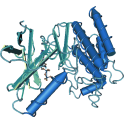
- Remove this product from my favorite's list.
- Add this product to my list of favorites.
Products
Newsletter
 |  |  |  |  |  |

Background: PTK2 is a focal adhesion-associated protein kinase (FAK) involved in cellular adhesion and spreading processes. FAK, also known as protein tyrosine kinase 2 (PTK2), is a large non-receptor tyrosine kinase that is typically activated through integrin-dependent focal adhesions and controls the assembly and disassembly of focal contacts and cytoskeleton reorganization. FAK is highly enriched in the growth cones of neurons and has a major role in neuronal development. FAK kinase activation leads to the phosphorylation of α-actinin and N-WASP, an actin nucleation-promoting factor that is known to regulate the number of filopodia at the growth cone.
Protein: Recombinant human FAK protein kinase, amino acids A2-H1052, N-terminally fused to GST-Thrombin cleavage site
Theoretical MW : 145.4 kDa (fusion proteins)
Expression system: Baculovirus infected Sf9 cells
Purification: One-step affinity purification using glutathione agarose
Activation: in vitro activation by Src
Storage buffer: 50 mM Hepes, pH 7.5; 100 mM NaCl, 5 mM DTT, 15 mM reduced glutathione, 20% glycerol
Protein concentration: 0.249 mg/ml (Bradford method using BSA as standard protein)
Method for determination of Km value & specific activity: Filter binding assay MSFC membrane
Specific activity : 14,000 pmol/mg min
Entrez Gene ID: 5747
UniProtKB: Q05397
Ordering information: shipped on dry ice
Navarro AI, Rico B. “Focal adhesion kinase function in neuronal development.” Curr Opin Neurobiol. 2014 Apr 2;27C:89-95.
Heinhuis B1, Koenders MI, van den Berg WB, Netea MG, Dinarello CA, Joosten LA. (2012) "Interleukin 32 (IL-32) contains a typical α-helix bundle structure that resembles focal adhesion targeting region of focal adhesion kinase-1." J Biol Chem. 287(8):5733-43.
Welcome Login
Contact us
Follow us